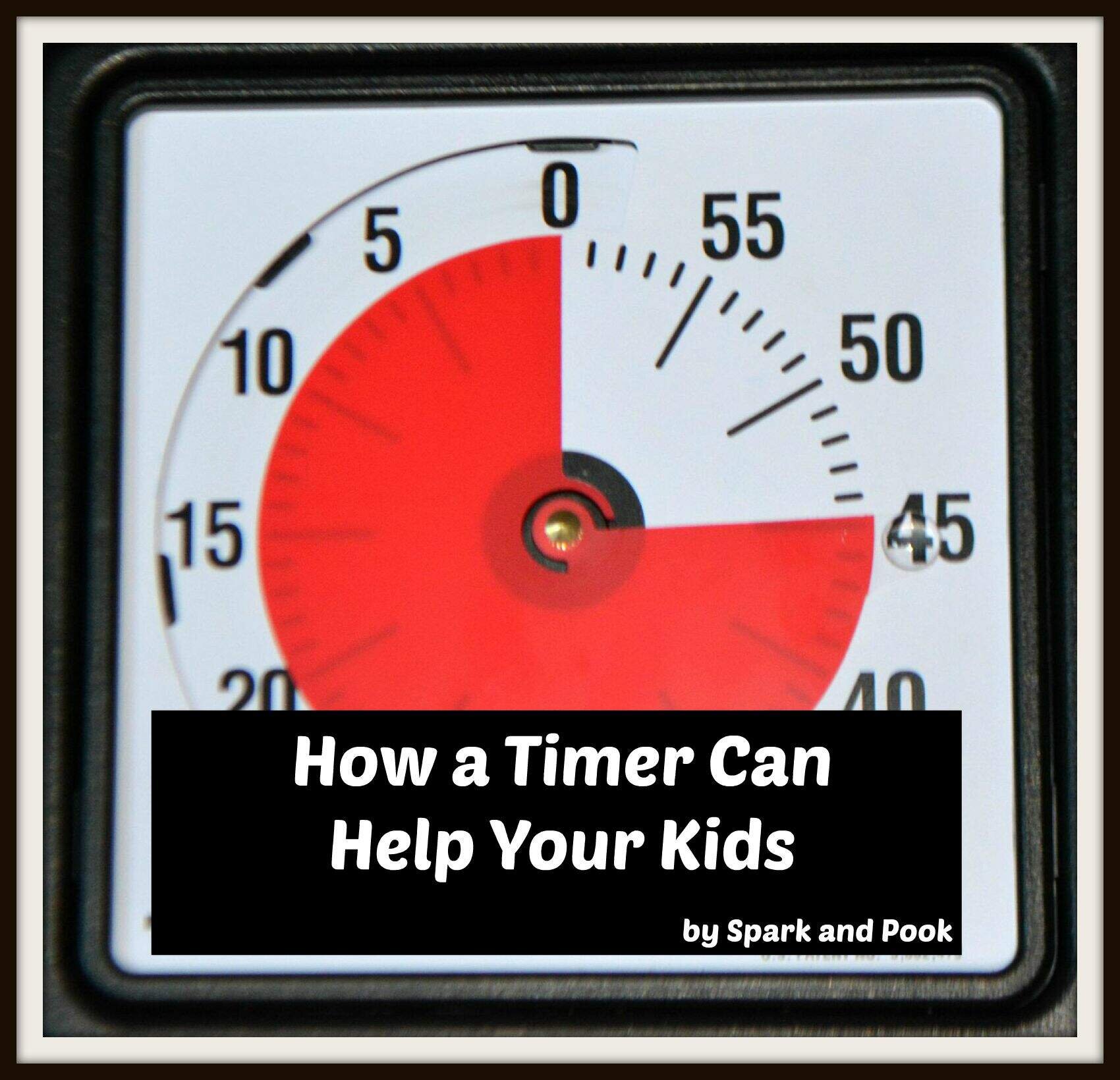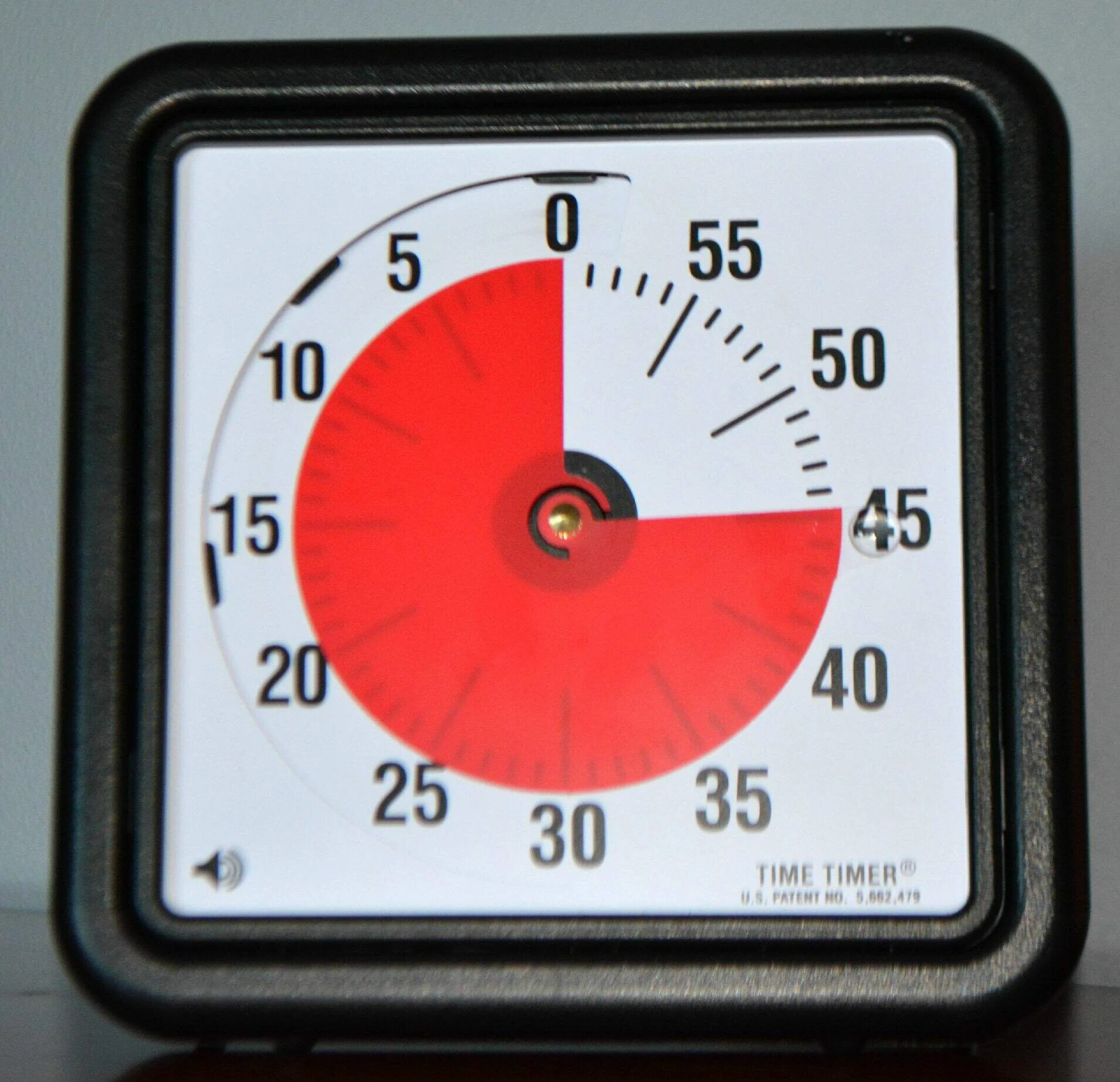How a Timer Can Help Your Kids
Back when I was teaching elementary school, I discovered just how useful a timer could be in the classroom. It wasn't too long into motherhood, that I knew it would come in handy in this realm as well.I remembered a specific type of timer that a kindergarten teacher I knew used with her students because it was a visual timer. It took me a while to find that particular one, but thanks to Amazon, I got my hands on it about a six months ago, and it has really saved my sanity.
I also sent one to my sister to use with her three year old son. They are enjoying it as much as we are.While this post contains an affiliate link, it is not a sponsored post. I just really want to share a product that I think every parent (or caregiver) of a young child could really benefit from.
Note: This post contains affiliate links. As an Amazon affiliate, I earn a small commission on purchases made through these links at no extra cost to you.
Any timer will help in the home and classroom in a lot of ways, but I really like this timer for little kids because it shows them how much time is left since they have no real concept of actual time. When there is a lot of time left on the timer, it shows a lot of red, and when there is only a little bit of time left, it shows only a sliver of red. Genius!
It has a loud beep that automatically shuts off after it sounds once. Also, you can turn off the sound if you prefer. This timer comes with "feet" allowing you to set it upright on any flat surface. (We move ours from room to room around the house depending on the need.) It can also be hung on the wall. It only requires one AA battery that seems to last forever. It is so easy to use, I usually let my three year old daughter set it.
Here are some ways this timer makes my life easier.
Nap time: My three year old is really fighting naps lately, but if I tell her to set the timer for 45 minutes and she has to stay in bed until it goes off, she's ok with that because she knows it's temporary with an end point. (I make sure to turn off the buzzer, and she usually falls asleep before the timer is up.) If she doesn't fall asleep, at least she got 45 minutes of rest time.
Play time: My daughter is an only child, so she wants me to play with her ALL THE TIME. While I love hanging out with Pooky, I need to do other things too. I discovered that if I set the timer for about 15 minutes, it helps us have good focused play time together and then when the buzzer goes off, she accepts that our time is up.
Rest time: Sometimes mommy and daughter both need rest time, so we set the timer and have quiet time until it goes off.
Clean up time: Without the timer, my daughter takes FOREVER to pick up her toys. Somehow this timer helps her focus more on her task, and it turns into a race against the clock. (If I see that she's not going to finish in time, I might surreptitiously add more time to the timer, or I'll help her so she finishes before the buzzer sounds.)
TV/Device time: Like most children, Pooky really likes watching videos and playing with apps. I don't want her to spend too much of her time this way, so I set the timer and she doesn't argue (too much) when time is up. (I try to time it to be the same length as one kid video (about 25 minutes).
Work time: When I'm facing a deadline, but my daughter keeps pestering me to play with her, I set the timer for about 30 minutes and tell my daughter that she needs to play by herself and let me work until the timer goes off. It works! I get uninterrupted time, and since I know the clock is ticking, I stay focused on my task.
Potty time: When we were potty training, my daughter went through a phase of wanting to get off the potty the second I put her on it. I started using the timer to let her know she needed to stay on the potty for at least a few minutes.
Bed time: This is another period of our day that used to cause us much strife. Now, thanks to this timer, our evenings go more smoothly. When it's getting close to the time we start our bedtime routine, I'll set the timer (for about 15 minutes) and let her play whatever she wants until time is up. She might be sad about going to bed, but she doesn't argue with the buzzer. Watching the red disk disappear on the timer face helps her prepare for what's coming.
Adventure time: When my daughter knows we are going somewhere exciting and just keeps asking over and over if it's time to go yet, I set the timer so she can see how much time is left before we will leave the house. (This only works for the hour leading up to our departure time, but it's an hour of peace.) She will entertain herself, and stop pestering me about going, and she just periodically checks on the progress of the timer.
Some tips for implementing the timer successfully.
Warn children about the loud beep, and have them stand far from the timer the first time they hear it. (My daughter was afraid of the loud noise the first few times it went off, so I would always warn her when it was about to beep. It no longer phases her.)
When first working with it, use it just for fun stuff (like play time), so that the child develops a positive association with it.
ALWAYS stick to the rule of the timer. If you ever let the child argue against the timer and extend his/her time, then it loses all its power.
Be sure to share this with others you think might like it as well.




